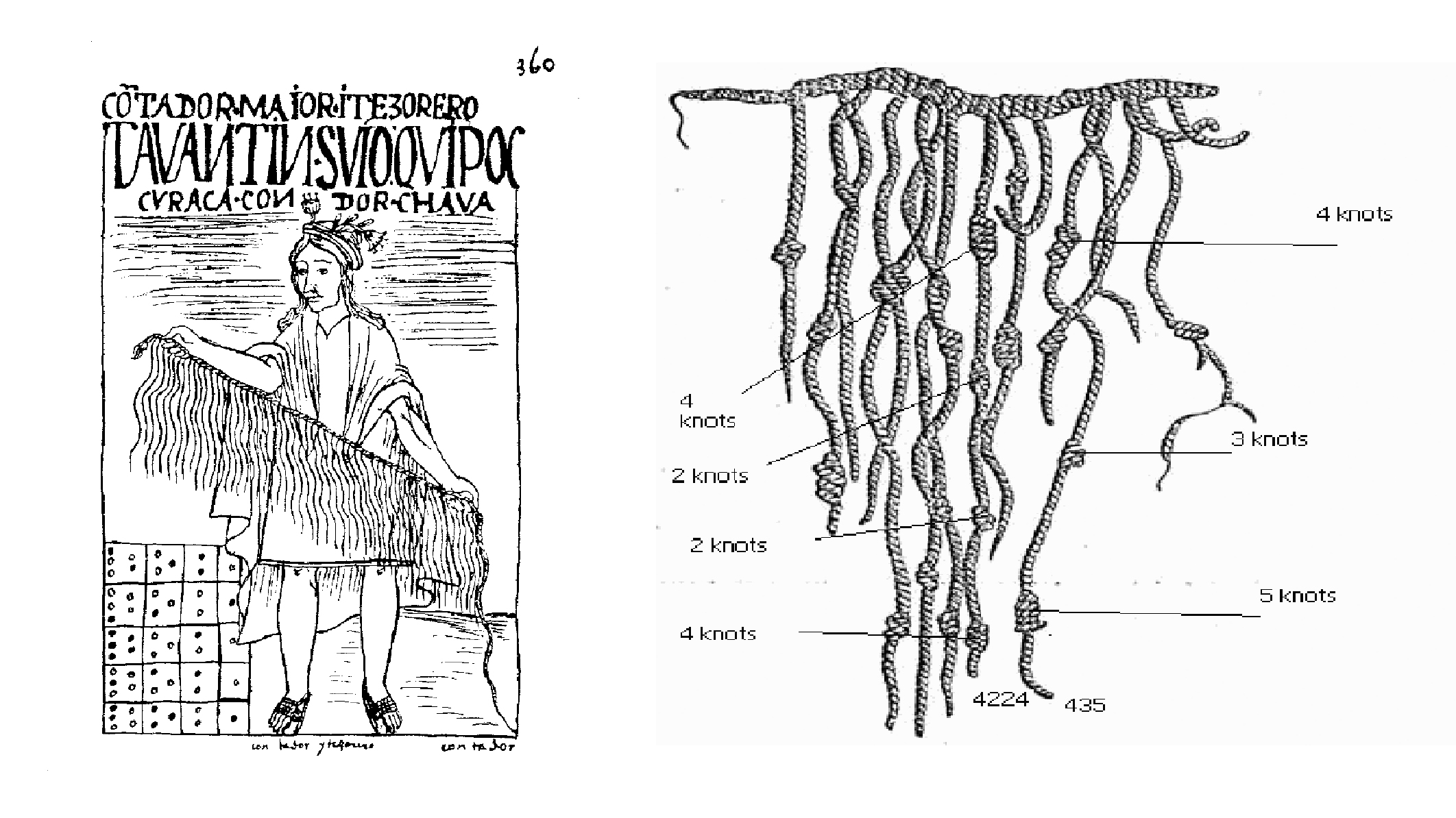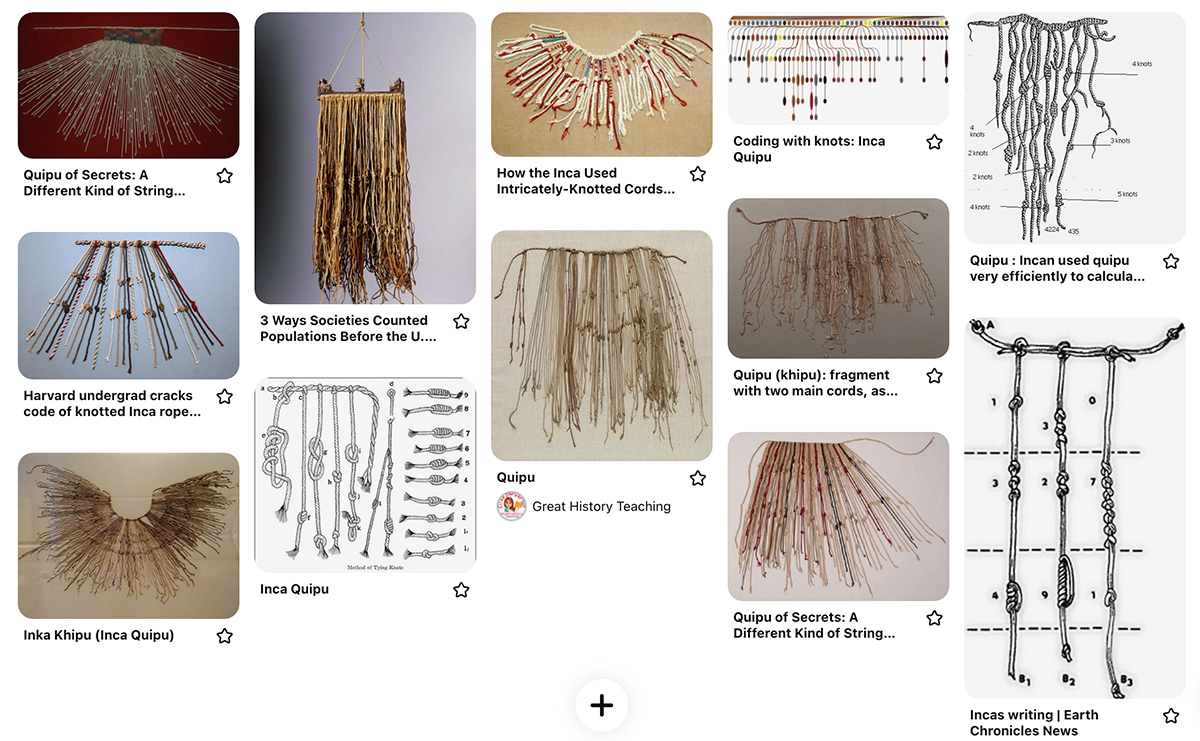13. Skin Electronics¶
Global lecture by Katia Vega, beauty tech designer, Assistant Professor of the Department of Design at the University of California - UCDAVIS.
Assignment¶
- Create a skin electronic to party.
- Present scketches and code it.
- Make a performance of your project functioning
Research¶
'Prior to Spanish colonization, the native peoples of the South American Andes, while having several distinct spoken languages, lacked any sort of written language or system of writing. Yet, especially during the Inca empire, they somehow managed to keep track with extraordinary accuracy of accounts, tribute payed and owed by the population, dates, stars, even historical events and more. The secret was lengths of knotted cords called “quipus.”
“Quipu,” simply enough, translates to “knot” from its native Quechua, the predominant native language in most of South America. Each quipu consisted of a thick length of cord (made of cloth, rope, llama hair, etc.) with many smaller cords hanging from it. In these smaller cords, various types of knots would be tied, different knots having different meanings. This is how the quipus were read.'
Quipu, from The Ohio State University

Contador, ....

My Quipu research board on Pinterest
Idea¶
Inspired by counting historical events, I decided to mark one particular event that marked all of our lifes. On March 11, 2020 begined the Covid19 global Lockdown, first Pandemia of this century. A day I will not forget, because I was at TextileLab Amsterdam in the morning and I had to collect all materials, arrange a urgent flight to Lisbon and make my final project in isolation from my family, in a borrowed apartment.

Electronic Scheme

Quibu assembling and testing, Carolina Delgado
Results¶
Lockdown starting date - Quipu, Carolina Delgado
References¶
Quipu, from TravelPuggy
From https://u.osu.edu/svoboda.33/quipus/
* Day, C. (1967). Quipus and witches’ knots. Lawrence, KS: University of Kansas Press.
Martin, C., & Wasserman, M. (2011). Readings on Latin America and its people. (Vol. 1). Upper Saddle River, NJ: Prentice Hall.
* Means, P. (1964). Acient civilizations of the Andes. New York, NY: Gordian Press, Inc.
* Molina, C. (2011). Account of the fables and rites of the incas. Austin, TX: University of Texas Press.
* Nordenskiöld, E. (1925). Comparative ethnographical studies: The secret of the peruvian quipus. (Vol. 6). Brooklyn, NY: AMS Press.
* Salomon, F. (2004). The cord keepers: Khipus and cultural life in a Peruvian village. Durham, NC: Duke University Press.
Lectures and Tutorials¶
- Fabricademy 20-21 WEEK 13 - Skin Electronics
- Fabricademy Student handbook